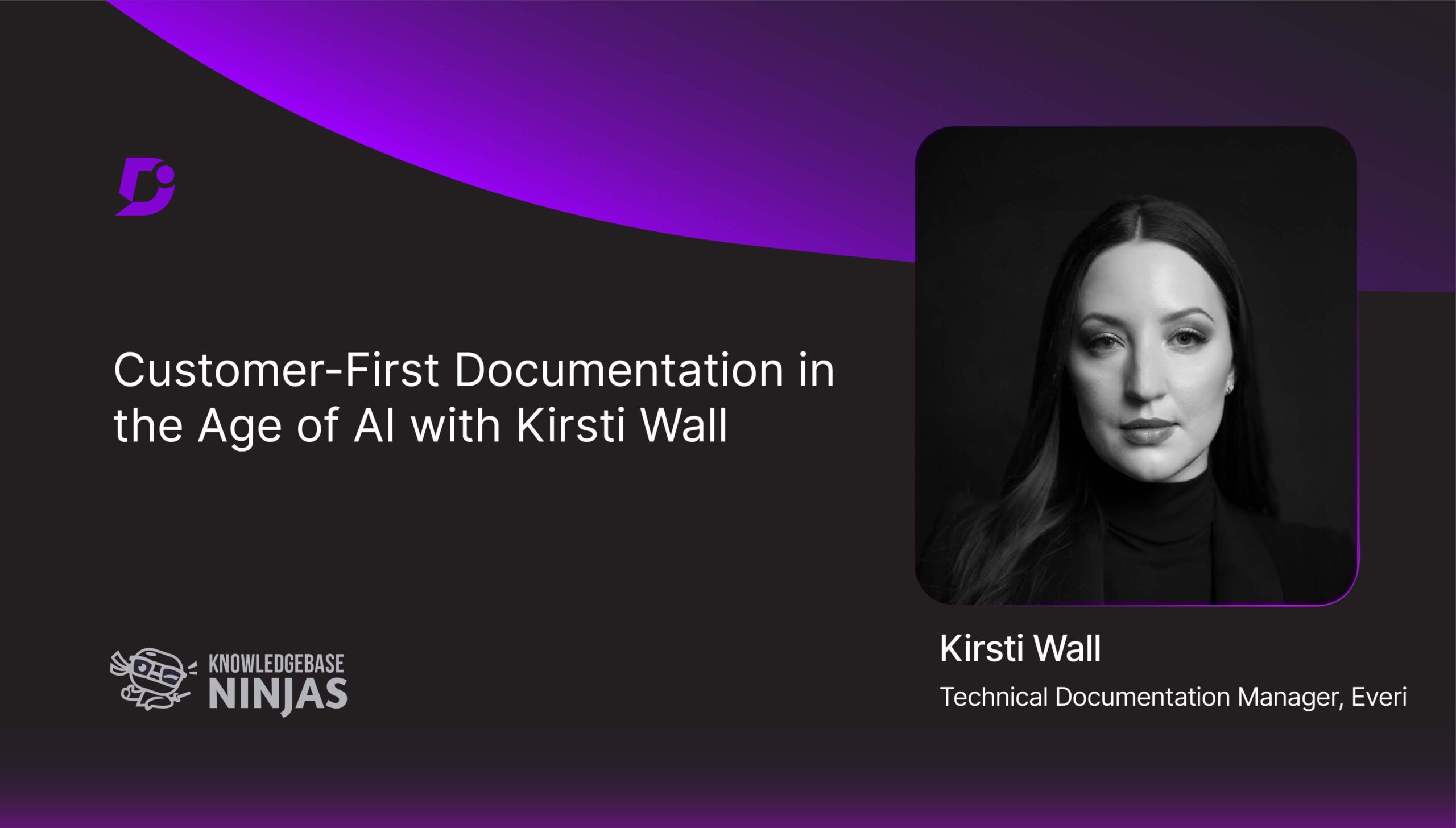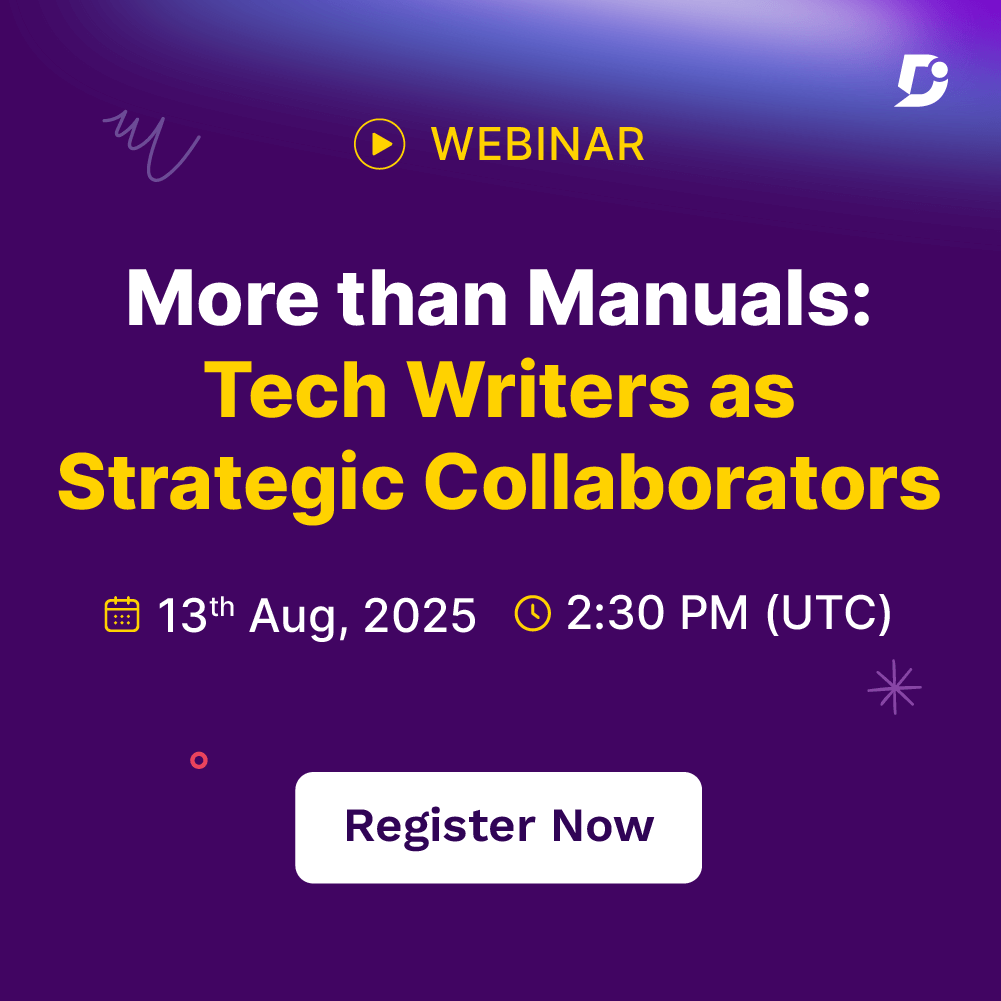In today’s episode of Knowledge Base Ninjas Podcast we have Kirsti Wall, the Technical Documentation Manager from Everi. She emphasizes how to make documentation scannable and organized, keeping the users in mind. She adds that effective design elements will direct the users in visual ways. Whereas simplification of content is called for, she also says about oversimplification and the focus on what truly sets the product apart in the documentation. She also discusses actual-world research using the assistance of guides, user interactions to enhance writing, and other tools in this era of AI.
Watch the full podcast episode video here
Listen to the full episode on Apple, Spotify and YouTube.
Quick jumps to what’s covered:
4:36 – Why Customer-First Thinking Matters in Technical Writing
6:09 – Best Practices for Structuring and Formatting Content
6:51 – The Role of Simplicity and the Risk of Oversimplification
7:47 – Metrics for Measuring Documentation Effectiveness
9:21 – How AI is Impacting Technical Writing
10:43 – Unconventional Resources for Improving Documentation
About Christie
-
Kirsti’s LinkedIn
-
Kirsti Wall from Everi, has worked her way through a non-linear career that began as a waitress in Indiana and progressed to overseeing documentation in five business areas and multiple time zones. Kirsti has a different way of looking at technical communication. Her experience with communications, along with her interest in graphic design, makes her to enhance clarity and learning. Well-versed in technical documentation, internal communications, branding, and usability, she manages teams, simplifies operations, and creates communication plans that drive impact, engagement, and growth.
Key Takeaways
-
Documentation should support a fast-in and fast-out experience
The users do not read the instructions page over page, they scan the document. The content must be skimmable and arranged in a way that can be located easily. There might also be a big enhancement of the user experience by ensuring that things are kept to a minimum and that the most important things are front and center so that even at a time such as when the user is frustrated, everything has been laid out in a manner that they can get whatever it is that they need at that particular time.
-
Words use visual designs to lead the reader more than just the words
Negative space and layout cues used in graphic design can help users access the information quickly. Design becomes a functional guide, not just a visual add-on, helping content feel intuitive to skim and navigate.
-
It is important to understand simplifying and oversimplifying
Although the routine actions, such as logging in, can be simplified. The documentation must contain more details as to what makes the product special. Striking a balance between clarity and depth makes sure that the reader receives what he/she requires.
-
Practical research is more helpful than formulas
Other than total dependence on readability tools, reading real-life manuals and examples of documentation provided with different products contributes to the development of writing instincts. The practical knowledge that is not always provided in the form of tools is introduced in this self-motivated research when it comes to gathering user guides or watching people interacting with the documentation.
-
AI is capable of increasing efficiency, but it requires human guidance
Such tools as ChatGPT may be used to brainstorm or rewrite wordy passages as a second writer. However, similarly to the spellcheck applied in Microsoft Word, AI is not context sensitive. It will not take the subtle differences, such as “lead a team” and “lead pencil”. That is why AI is to help rather than to substitute the writer. AI is defining the future of customer-first documentation, but writers remain kings.
Rapid Fire
-
What are some valuable resources you would recommend to the viewers?
Everyday items make great reference material for learning documentation. -
One word that comes to mind when you hear “documentation”?
Empowerment -
Advice to your 20-year-old self?
Use your weakness as strength and your hobby as your edge, which can become the biggest advantage.





 –
– 

